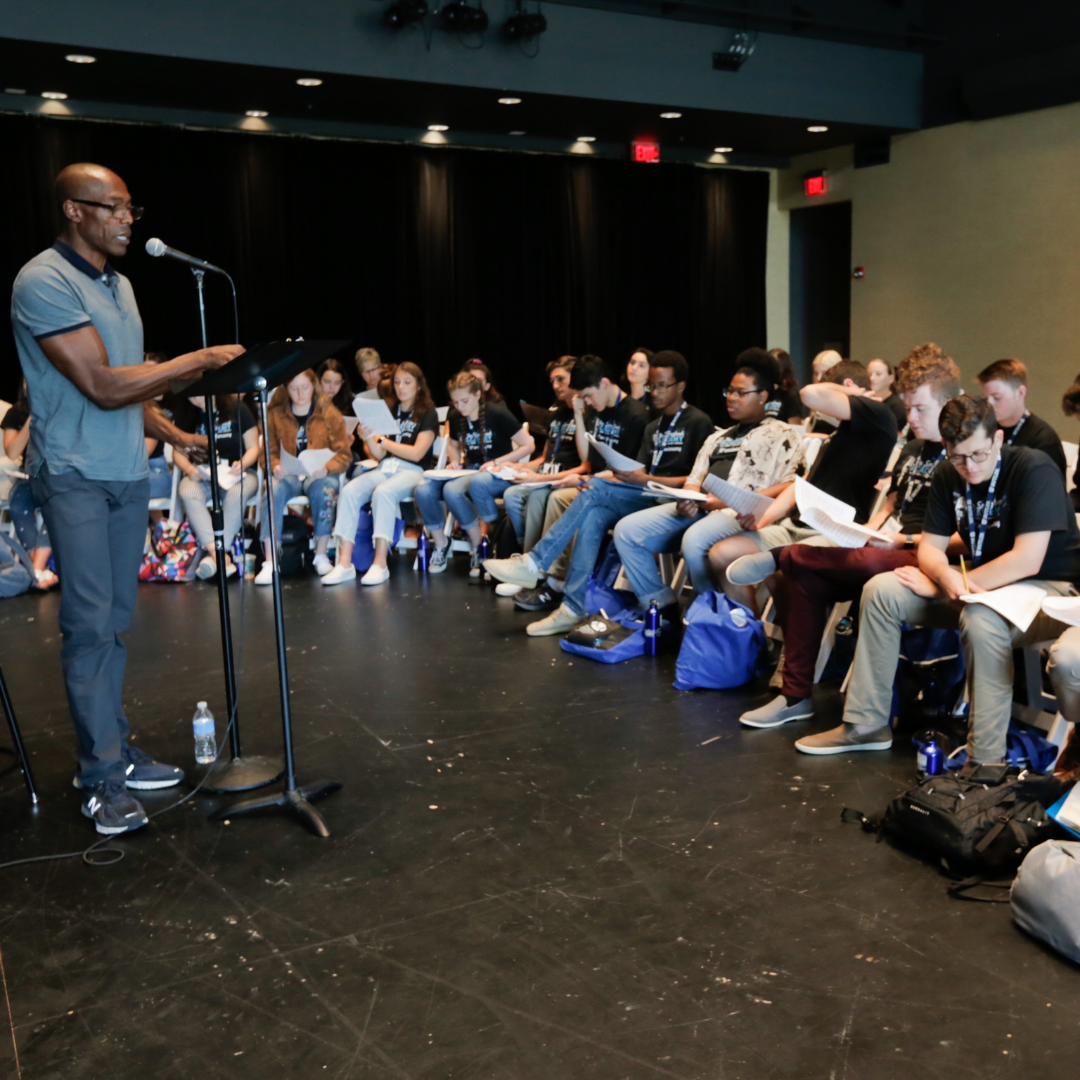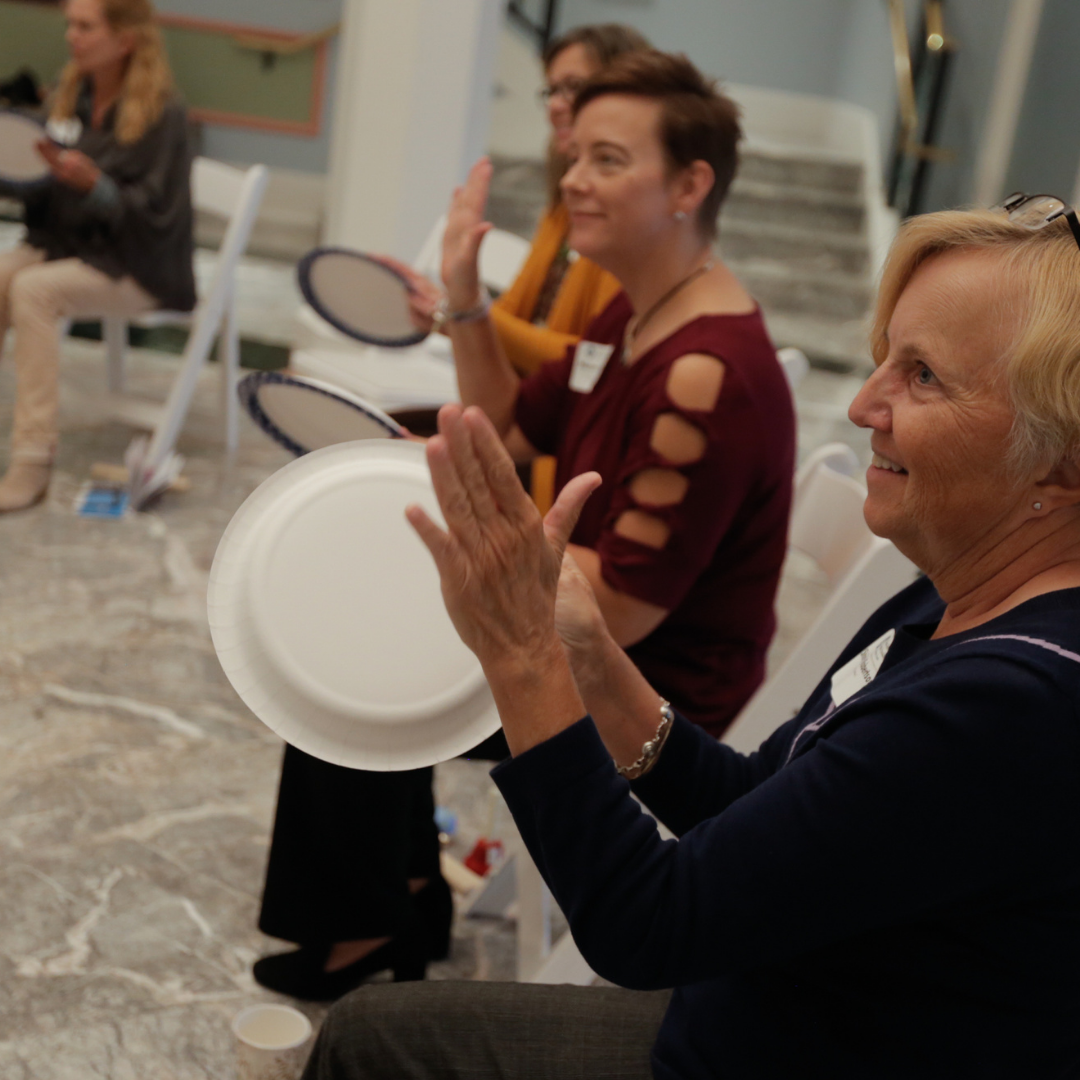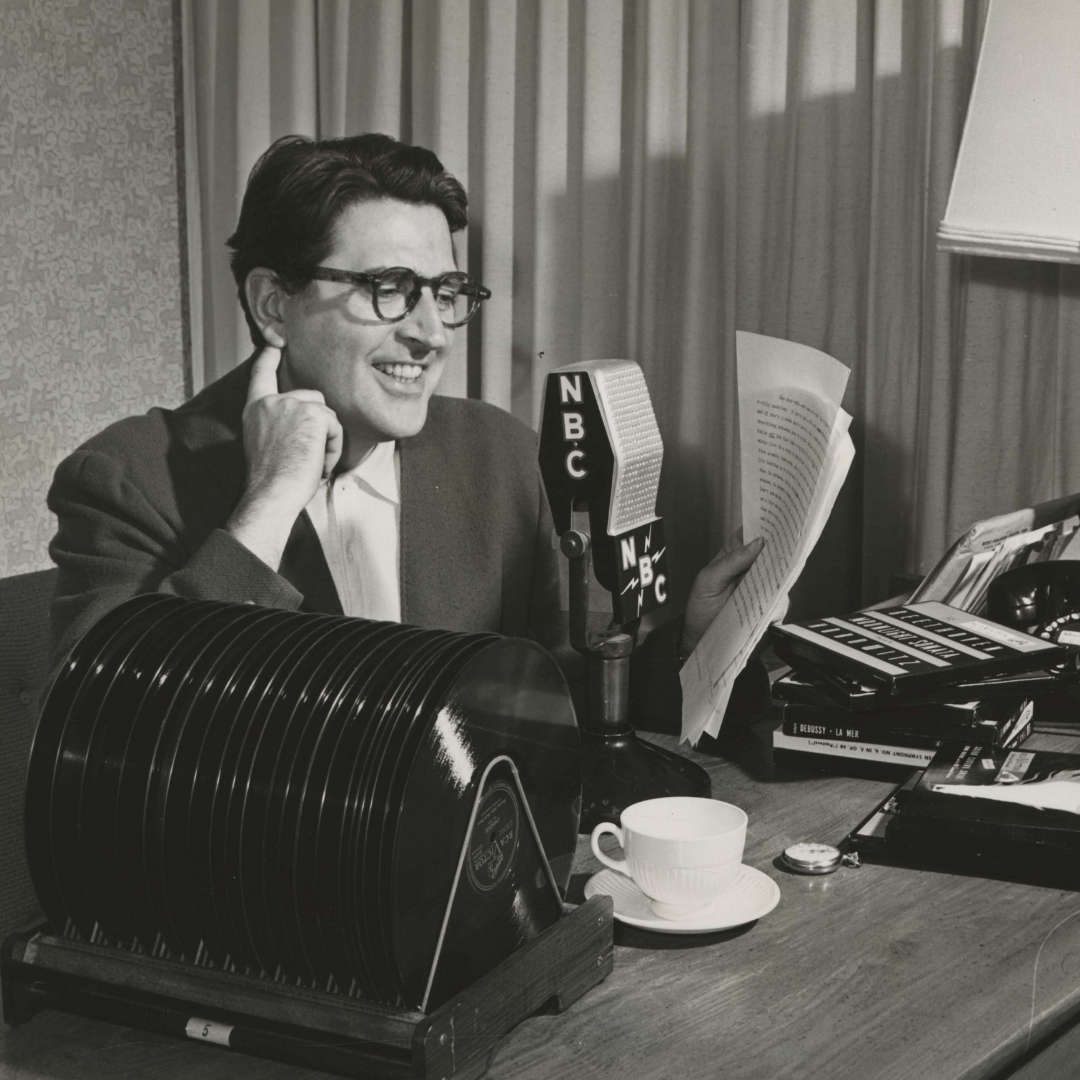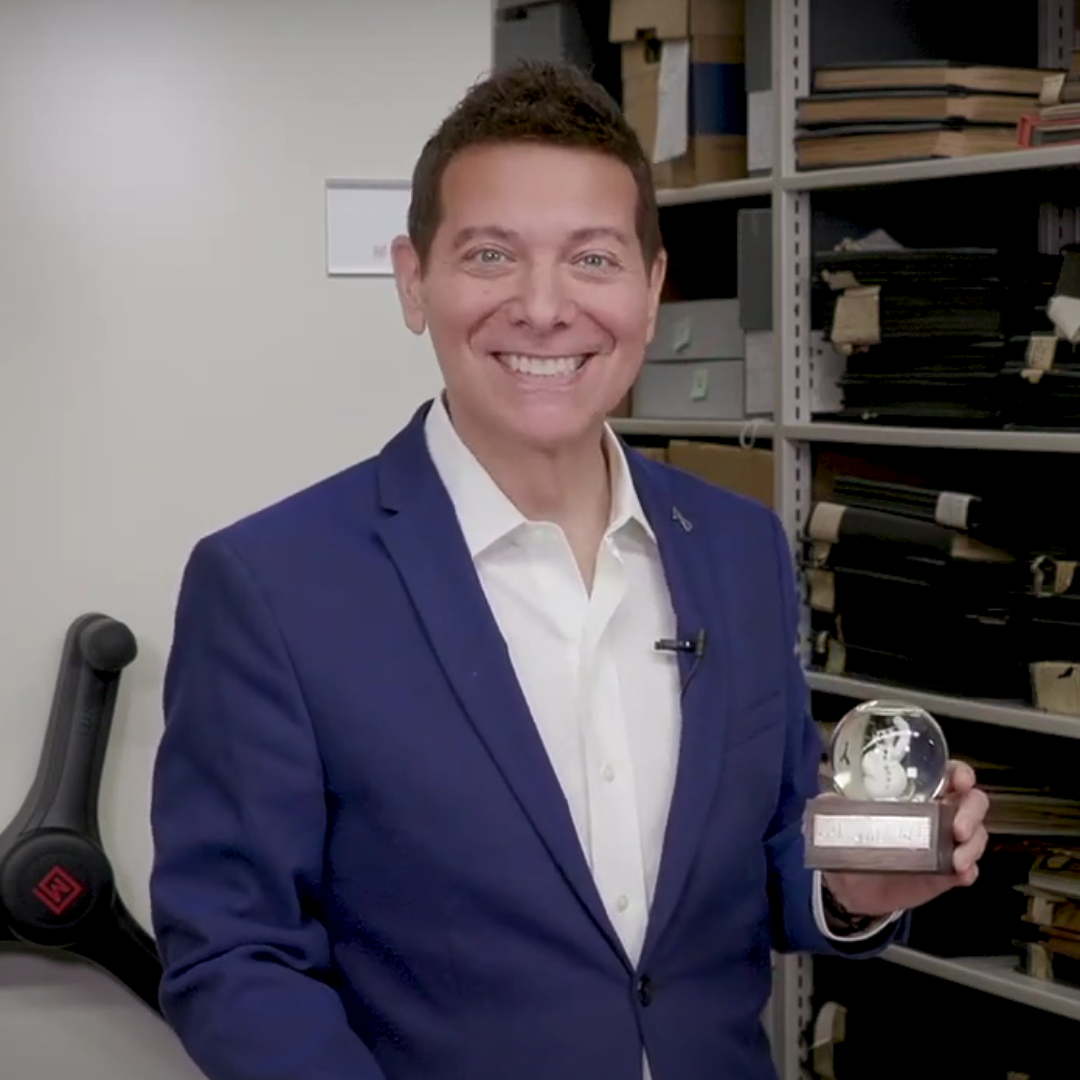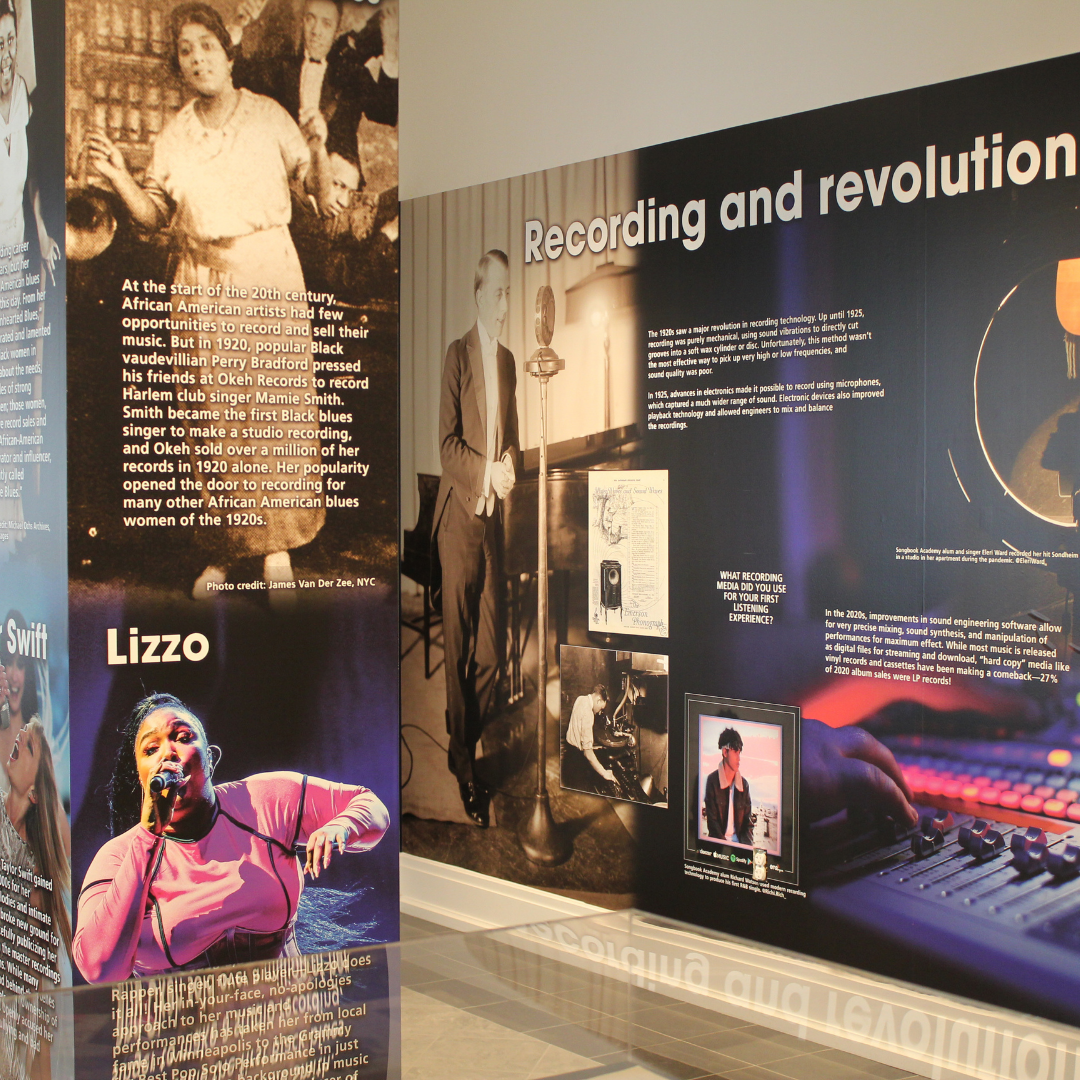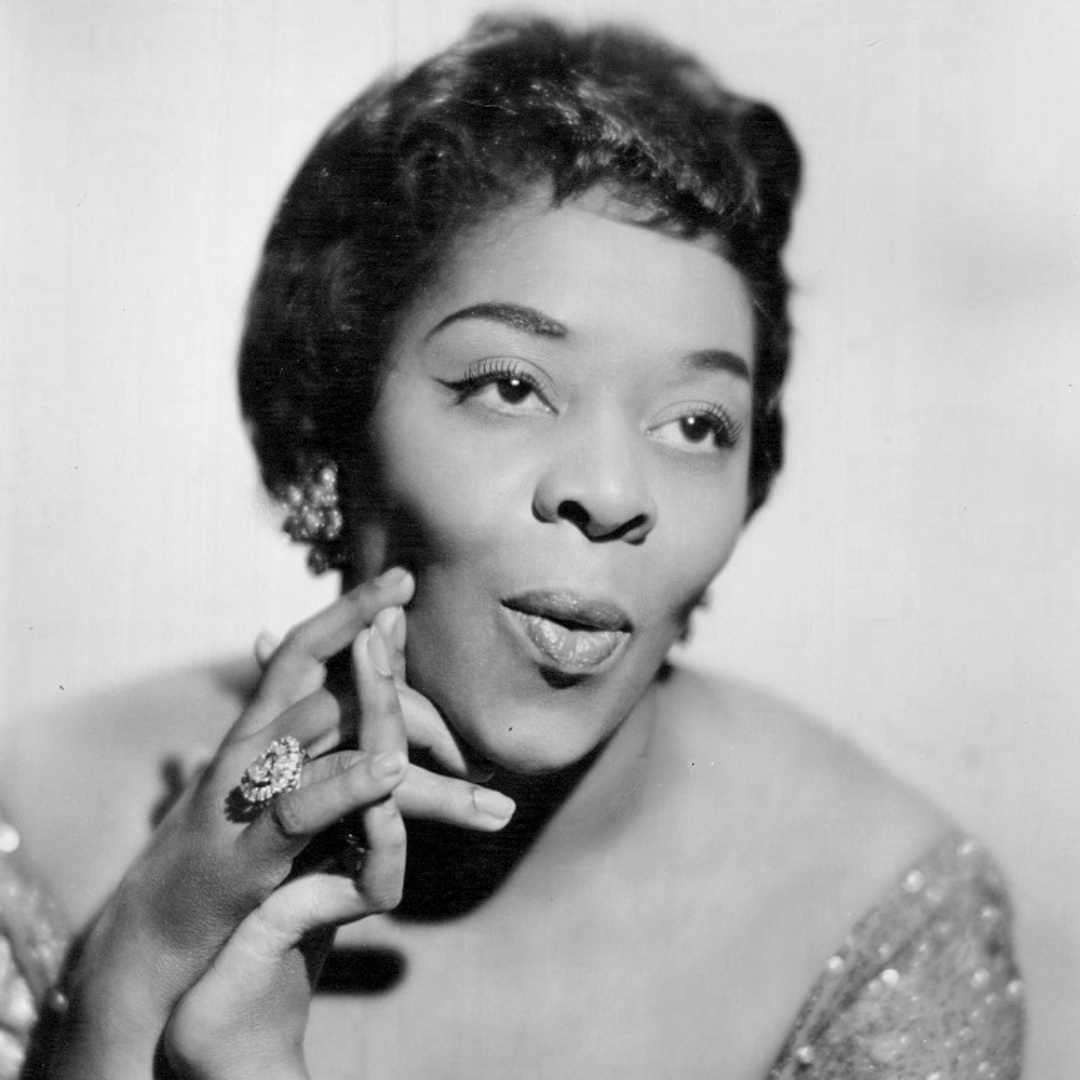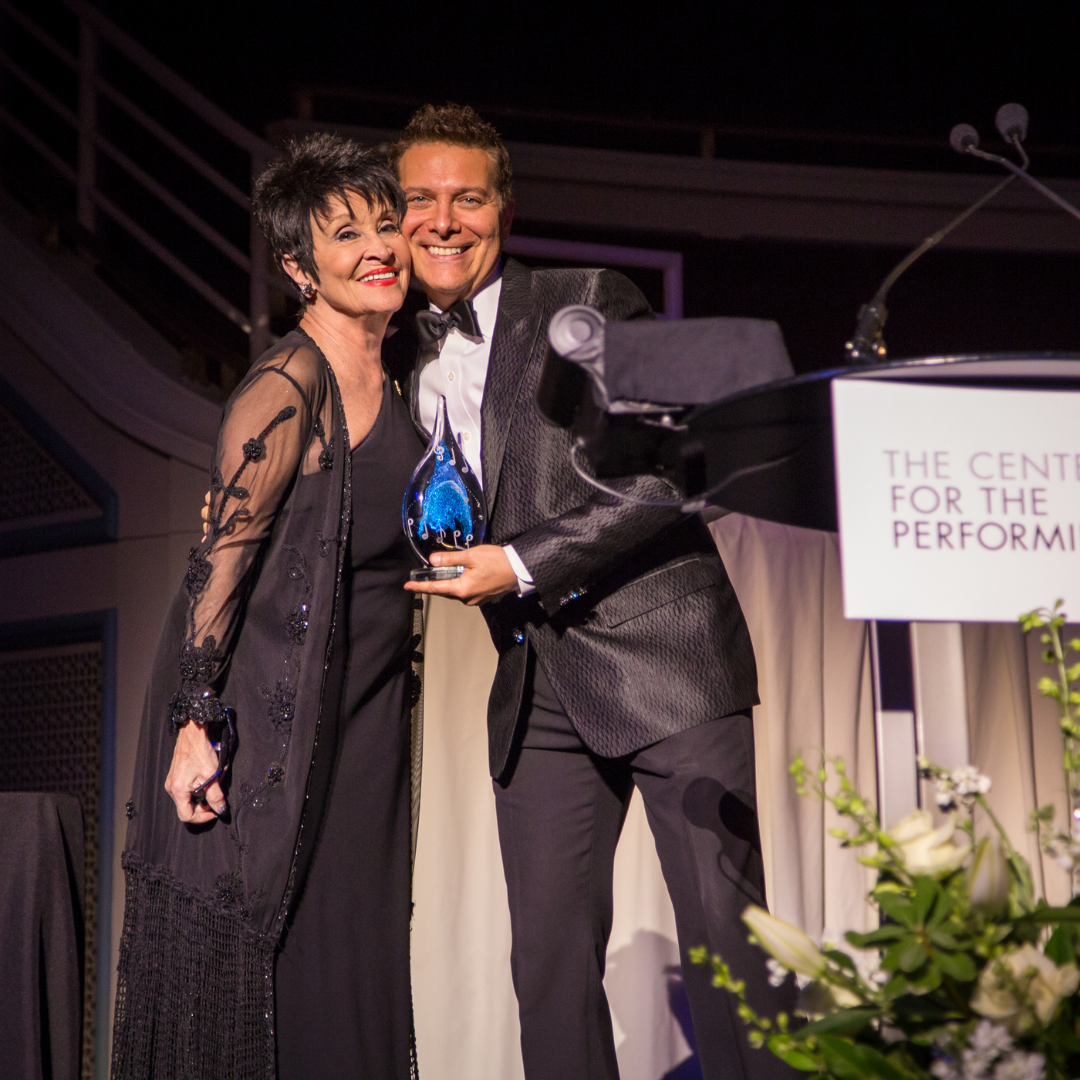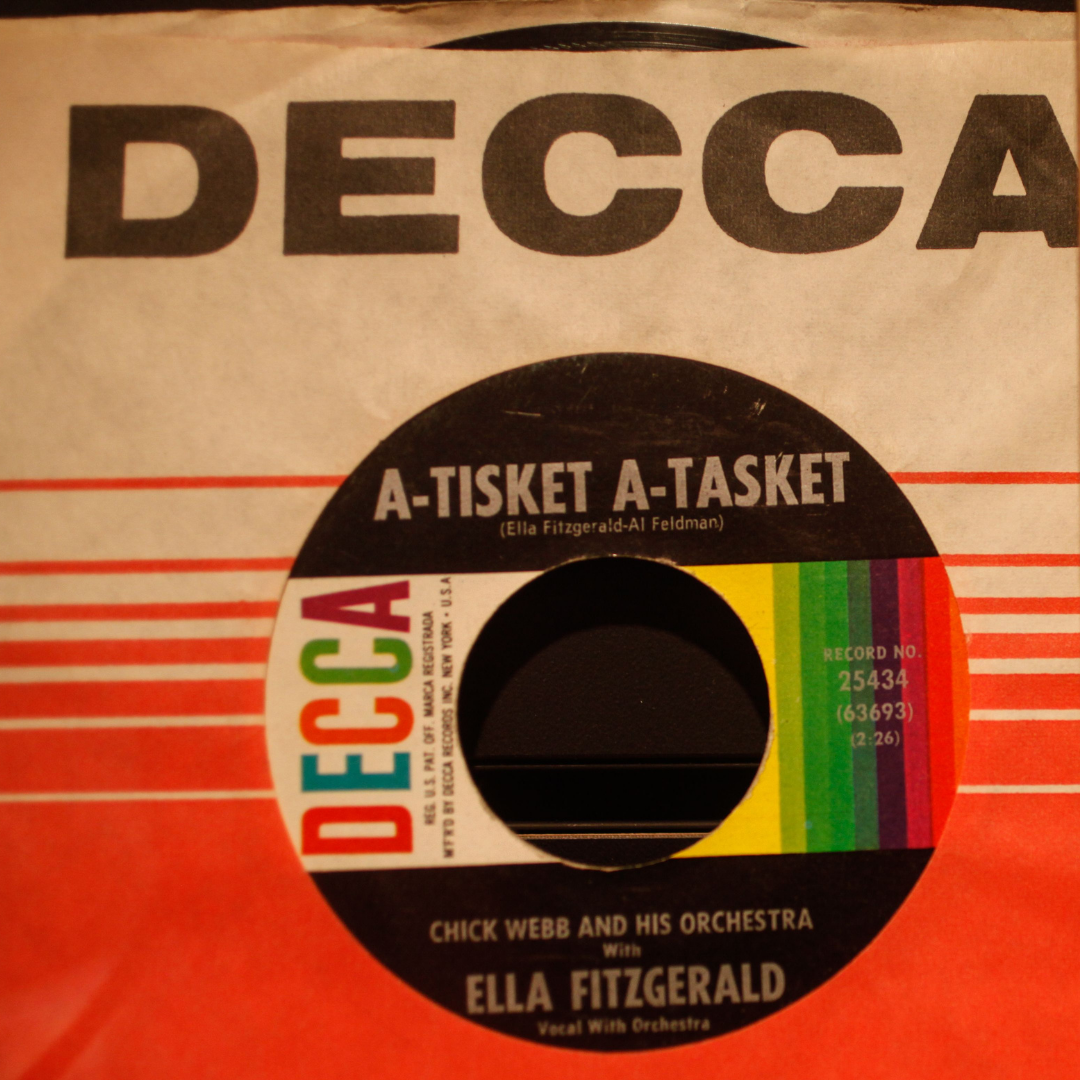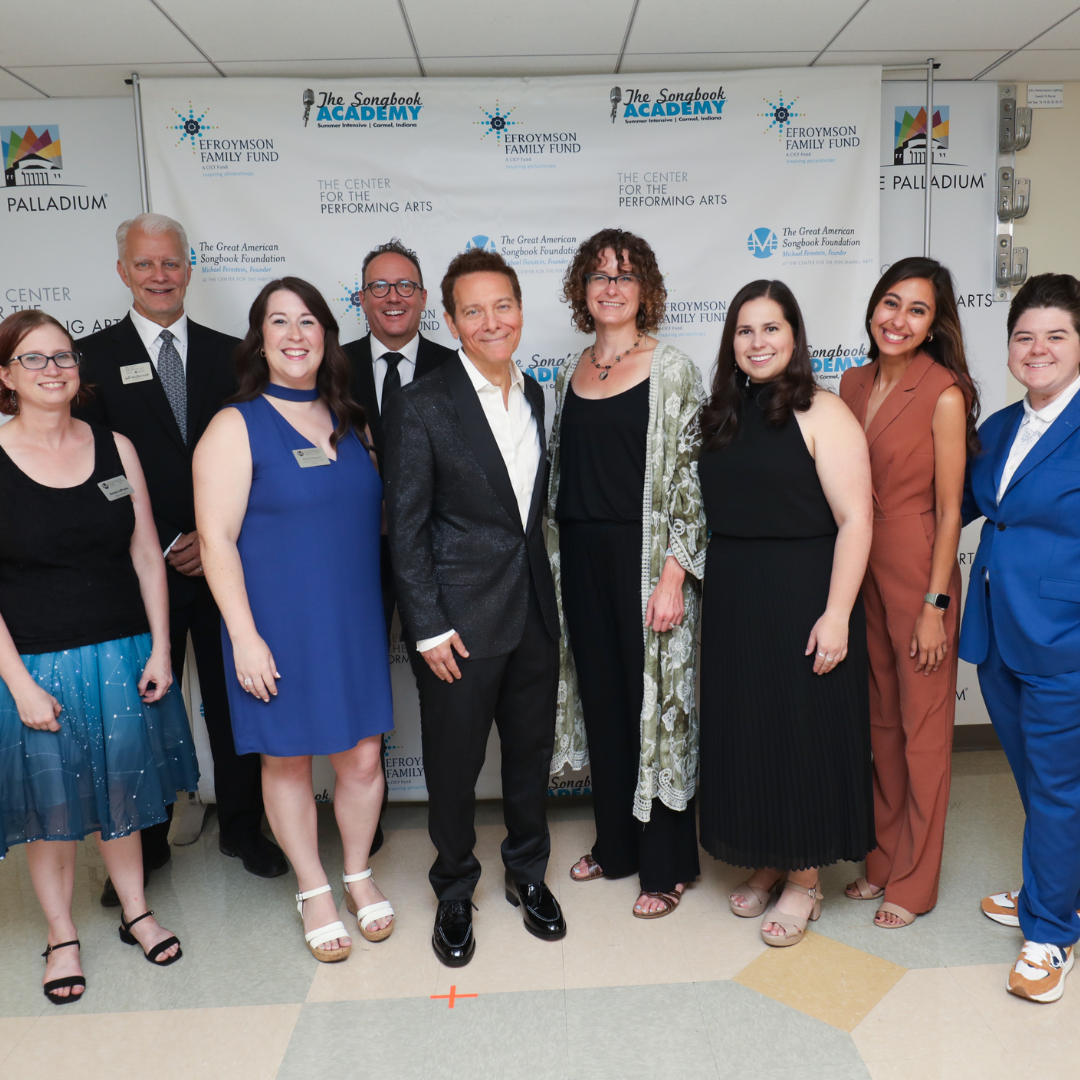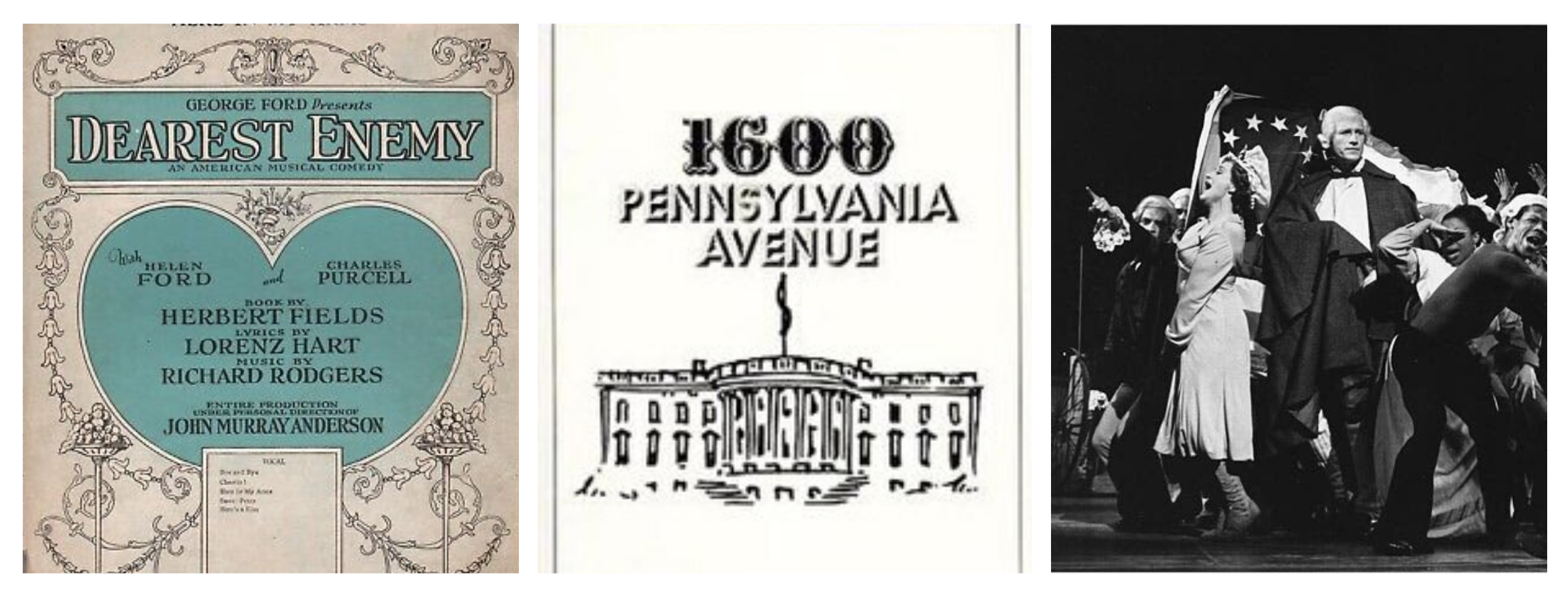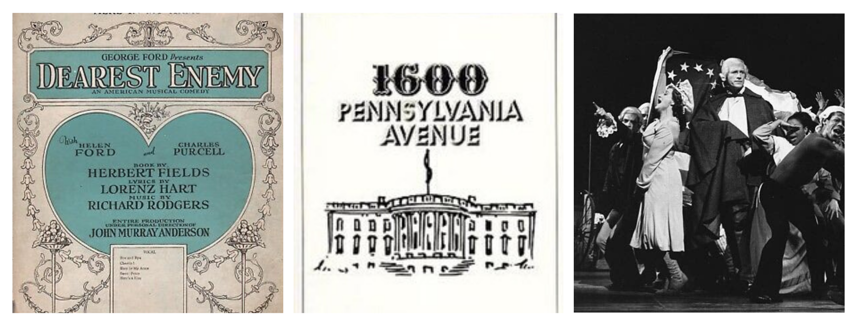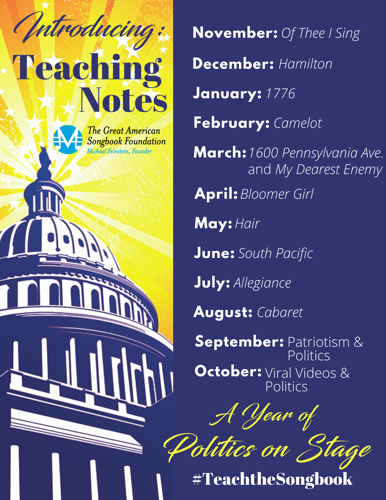Teaching Notes - 1600 Pennsylvania Avenue and My Dearest Enemy
March 25, 2020
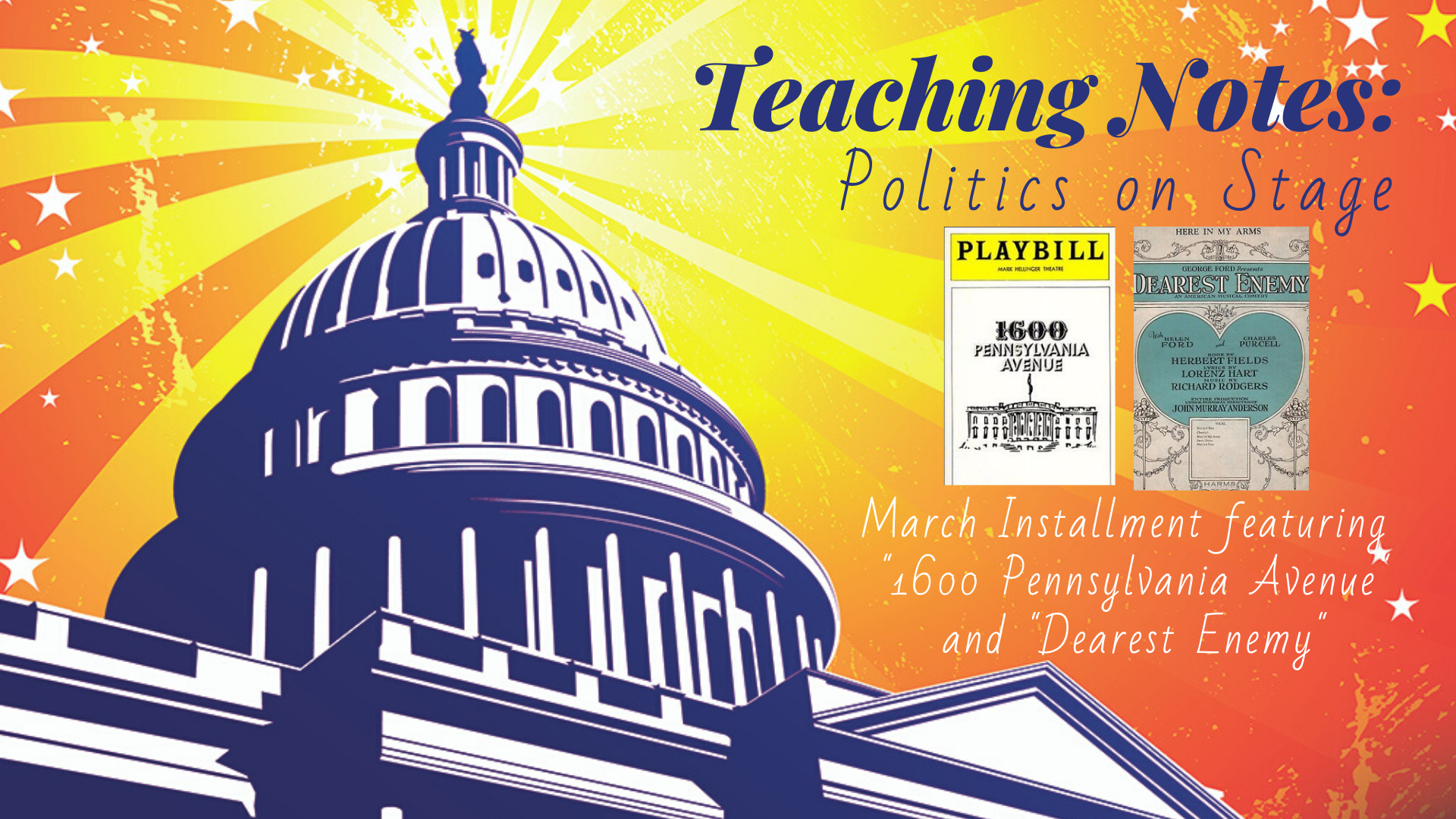
Welcome to Teaching Notes - a blog series written by a teacher to help other teachers #TeachtheSongbook.
A Note from the Author: I can’t imagine life without music. When tunes float by, memories flood in. My foot starts tapping, fingers start snapping, and I get caught up in the emotion of the song. For 28 years, music was always a key component in my classroom. It never failed to grab the attention of my students and made past cultures come alive with connections to daily life.
I’m excited to open up a discussion about the new Songbook exhibit, Of Thee I sing Politics on Stage. It’s a storytelling device where cultural values are seen in the context of music. Including musical theater in your classroom has never been easier. Join me in this forum where you can share your lesson plans and get ideas from others. It’s your point of access for creative ways to engage your students through music. Tell me what works and what’s missing. Let’s start a conversation and get those toes tapping.

Sue Ackley
Contact me at: info@thesongbook.org
This Month's Teaching Notes:
Bernstein and Lerner…Rogers and Hart…One show’s a flop. The other is not. Two powerhouse teams create music for 1600 Pennsylvania Avenue and My Dearest Enemy. Is it the script or the music that makes a show successful?
Images from the Songbook Foundation's current exhibit installation titled, Of Thee I Sing: Politics on Stage. Learn more here.
What's it all about?
1600 Pennsylvania Avenue proposed to retell the history of the first hundred years of White House residents: Presidents and their wives upstairs and successive generations of a family of servants (at first slaves) downstairs. Read full summary here.
It ended up as one of the greatest flops in Broadway history, closing after only seven performances and causing such grief to Bernstein and Lerner that they decreed there would be no cast recording. Read full summary here.
My Dearest Enemy takes place in 1776, during the American Revolutionary War, when Mary Lindley Murray detained British troops long enough in Manhattan to give George Washington time to move his vulnerable troops. Read the full summary here.
“Dearest Enemy… wasn't a failure. It was what we'd call a moderate success.” Read full summary here.
What's going on in U.S. politics?
1600 Pennsylvania Avenue – 1976
Gerald Ford was president as America celebrated its bicentennial. Inflation was high, Apple was formed, the Concorde began their commercial flights, Viking I landed on Mars, and the “Cod Wars” ended.
My Dearest Enemy – 1925
In the midst of the Roaring 20’s and prohibition, Calvin Coolidge was president. It was an era of isolationism, fear of communism, and the growth of the Ku Klux Klan.
What topics are covered in the musical?
1600 Pennsylvania Avenue
-
Racial injustice
- Political corruption
-
Cantata
My Dearest Enemy
-
Patriotism
-
Heroine
-
Quakerism
Start a discussion:
-
What themes from musicals resonate throughout the decades?
-
How can music serve as a political act and promote social agenda?
-
What role does music play in the success of musical theater?
What's been said about the musicals?
The critics and the commentators share their views, not just about the play, but the songwriters as well.
1600 Pennsylvania Avenue
- In an opinion piece published in the New York Times, journalist, Warren Hoge, re-explores the musical for Bernstein's 90th birthday, “'It was the bicentennial year, and nobody liked being told painful stories,' she said. 'But you could say they were prescient, because they totally nailed it when they said that racial injustice was this built-in seismic fault and had to be addressed.'" Read the full article here.
- In regards to the musical score of 1600 Pennsylvania Avenue, “'Bernstein and Lerner created an astonishingly good score, even a synoptic all-American one, with fanfare, march, waltz, blues. It's Bernstein's most classical work for Broadway.” Read the full Wikipedia summary here.
- From the New York Times opinion piece by Warren Hoge,“The score is Bernstein at his most exuberant and all-embracing. Identifiable in it are anthems, ballads, blues, calypso, drinking songs, Dixieland, torch songs, waltzes, jazz, hymns, spirituals, marches and a cappella barbershop harmonies... 'It is music that evokes the pioneering spirit of discovery which is quintessentially American,' Mr. Bass said... Lerner’s lyrics are witty and percussive, but they often go by at a Gilbert and Sullivan patter-song pace and can confound listeners.'" Read the full article here.
- From the Wikipedia page about Leonard Bernstein, “Bernstein was 'one of the most prodigiously talented and successful musicians in American history.' Read the full summary here.
- About Composer Leonard Bernstein:
- 10 Interesting Facts: "He has been famously quoted saying, "I'm not interested in having an orchestra sound like itself. I want it to sound like the composer." Read all ten facts here.
- Composer Quote: “In the beginning was the Note, and the Note was with God; and whosoever can reach for that Note, reach high, and bring it back to us on earth, to our earthly ears—he is a composer" - Leonard Bernstein, 1963. Read more here.
- 10 Interesting Facts: "He has been famously quoted saying, "I'm not interested in having an orchestra sound like itself. I want it to sound like the composer." Read all ten facts here.
- About Lyricist Alan J. Lerner:
- Lyricist Quote: "Once he (my father) told me, 'I don't understand how you can be a writer. I've been talking to you for years, and I doubt if your vocabulary exceeds 300 words.'" - Alan J. Lerner. Read the full article here.
- Lyricist Quote: "Once he (my father) told me, 'I don't understand how you can be a writer. I've been talking to you for years, and I doubt if your vocabulary exceeds 300 words.'" - Alan J. Lerner. Read the full article here.
My Dearest Enemy
- In a Playbill "On the Record" column, Steven Suskin notes, "Dearest Enemy opened Sept. 18, 1925 during a momentous ten days on Broadway… It's not any wonder that Dearest Enemy got lost in that crowd." Read the full column here.
- In a summary of the show, My Dearest Enemy,"had been variously described as an operetta and a genuine comic opera in the press.” Read the full summary here.
- About Composer Richard Rogers (access the full Wikipedia page here):
-
“When he was just out of college Rodgers worked as musical director for Lew Fields. Rodgers was considering quitting show business altogether to sell children's underwear, when he and Hart finally broke through in 1925.”
-
“With 43 Broadway musicals and over 900 songs to his credit, Rodgers was one of the most significant American composers of the 20th century, and his compositions had a significant impact on popular music.”
-
- About Lyricist Lorenz Hart:
- Lyricist Quote: “Wide awake I can make my most fantastic dreams come true." (from azquotes.com)
- From the LA Times Archives: "Lorenz Hart remains as elusive as his songs are present. He was 'The saddest man I ever knew.' Hart was a tormented man." Read the full article here.
- Lyricist Quote: “Wide awake I can make my most fantastic dreams come true." (from azquotes.com)
Useful Lesson Plans and Ideas
- Leonard Bernstein - The Power of Music
- The Burning of Washington
- African Americans and the White House: 1900 - Modern Day
- Designing the White House: 1792-1830
- Sounds of Change
- American Revolution
Where can I find out more?
- Videos below
- "A White House Cantata": a concert adaptation of 1600 Pennsylvania Avenue
- Leonard Bernstein
- Alan J. Lerner
- My Dearest Enemy
- Richard Rogers
- Lorenz Hart
- The Heart to Hart: Lorenz Hart a Poet on Broadway
- Rogers and Hart's Dysfunctional Partnership
- Heroine of the Revolutionary War
- Mary Lindley Murray
Patricia Routledge 1600 Pennsylvania Avenue
Duet for One Patricia Routledge
Julia Andrews singing "Take Care of This House"
My Dearest Enemy
My Dearest Enemy - "I'd Like to Hide It"
Up next month: Bloomer Girl
As the Civil War looms, a young, progressive woman causes a scandal as she challenges the hoopskirt norm of society in favor of comfortable “bloomers".
Happy Teaching! Please share your success in the classroom with us by posting about your lesson plan using the hashtag #TeachtheSongbook and tagging us @songbookfoundation.
Keep an eye out for our other installments coming soon...



